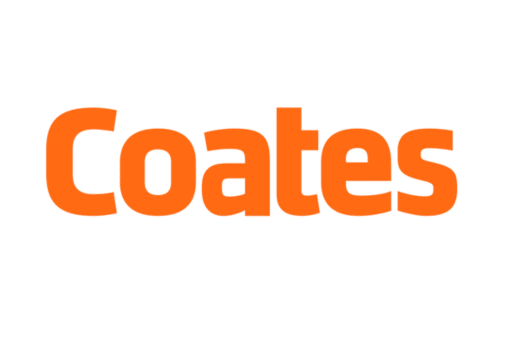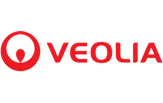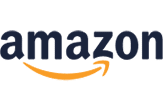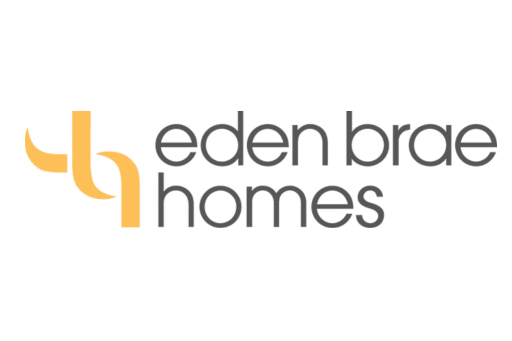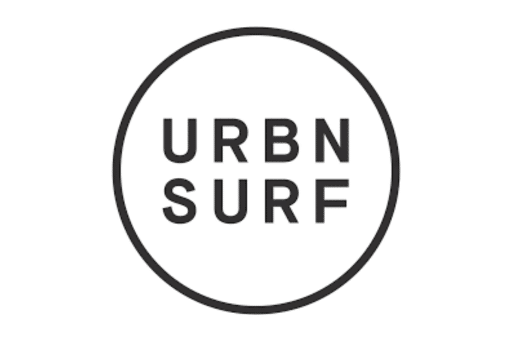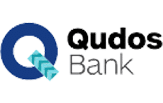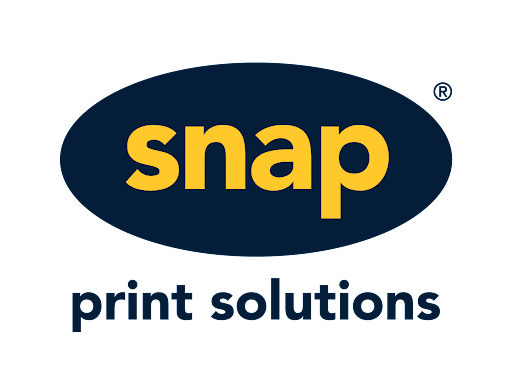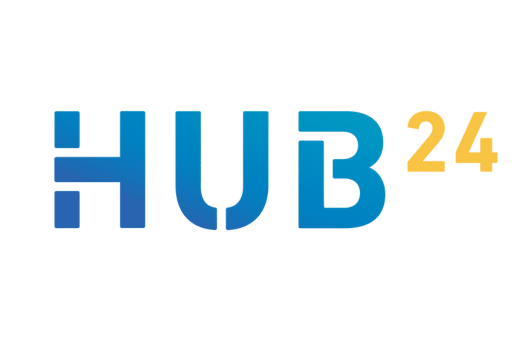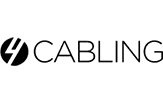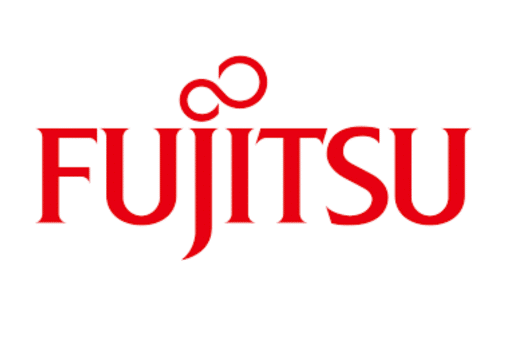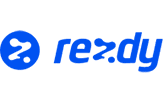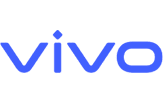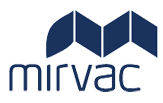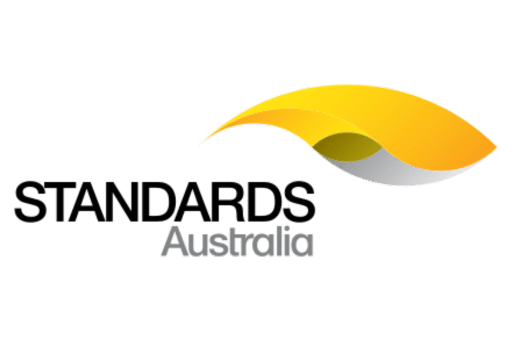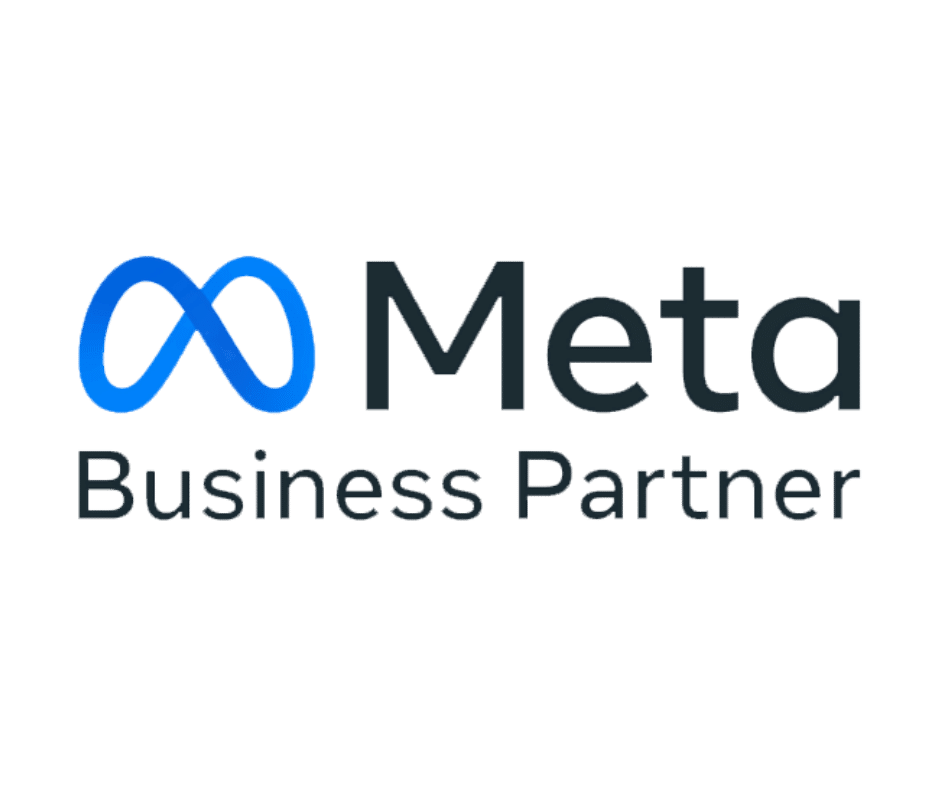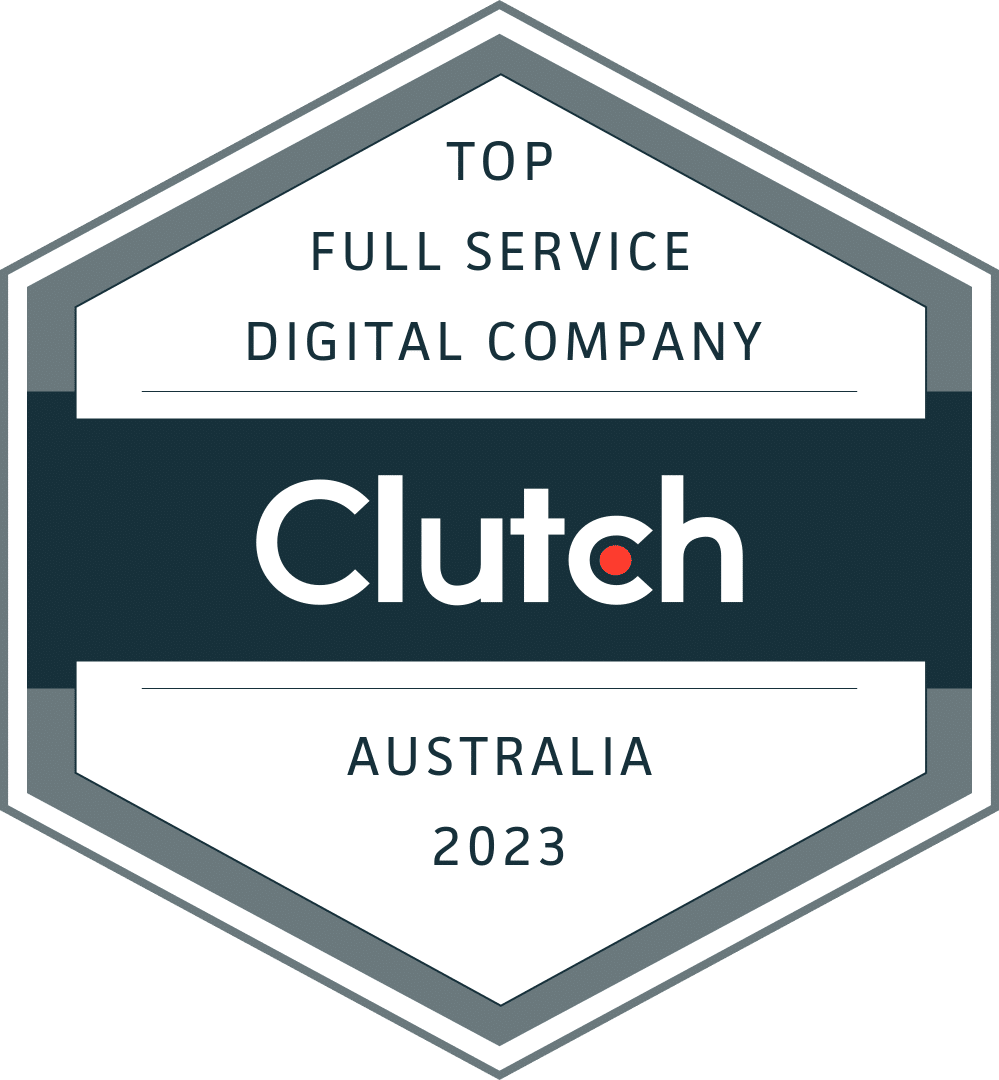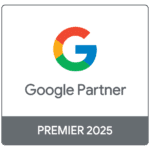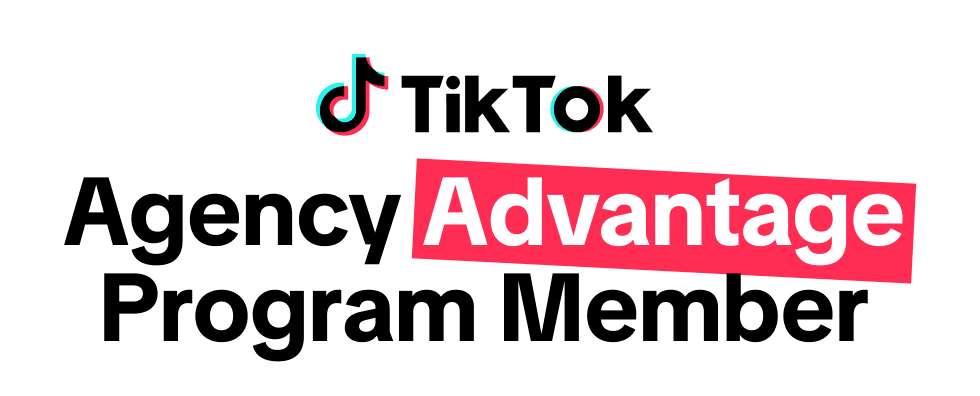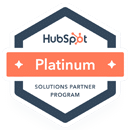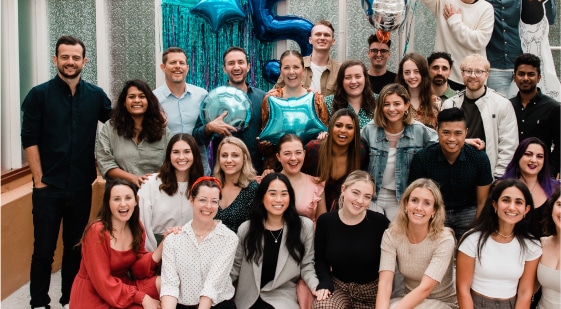Drawing Insights and Forming Strategy
Episode Description:
Julian Cole, leading strategy consultant to brands including Uber, Apple, Facebook, and Disney shares his practical advice on how to create a marketing strategy. He also discusses what ‘insights’ really are, and how you can use them to drive your creative and messaging.
Key Takeaways:
- The 1:2:3 model: 1 paragraph/page, 2 points of view, and 3 parts.
- How Spotify reinvented their product to target Gen X with their ‘Listen Like You Used To’ campaign.
- What insights really are and how you can form them.
- The consumer’s problem lies at the heart of every good marketing strategy.
- The ‘Get Who To Buy’ framework.
- Whether generative AI is actually a helpful tool for creating strategy.
- Strategy case studies from PlayStation, Snickers and Hilton Hotels.
Featuring:

Julian Cole
About the Guest:
Julian Cole is a strategy consultant to leading brands including Uber, Apple, Facebook, and Disney. Previously he was Head of Comms Planning at BBDO New York, where he oversaw a team of 15+ strategists who created award-winning work for Bacardi, Footlocker, Mountain Dew, GE, Snickers, M&Ms, Lowes, Interscope Records, Bombay Sapphire and the Sandy Hook Foundation. Prior to that he was Head of Communications Planning at BBH New York, helping to launch the PlayStation 4 to be the highest-selling console launch in gaming history. You can find him on LinkedIn or visit his website here.
Podcast Summary: Drawing Insights and Forming Strategy
Leading international strategy consultant, Julian Cole, gives advice on how to form a cohesive, practical and relevant marketing strategy for your brand.
A strategy should inform all marketing activities, chosen channels and a businesses’ messaging/offers to their audience.
However, many businesses are often not clear on what their strategy is, and how their marketing activities can drive measurable results. Continuing without an informed strategy ultimately leads to wasted budget, poor performance, and limits long term sales success.
Read on to learn how you can create an effective marketing strategy for your business.
The 1:2:3 Strategy Framework
One key problem area for many businesses forming a strategy, is that it is often multiple pages in length and isn’t specific enough to give directions. Effectively, the 1:2:3 framework allows you to outline the core of your strategy in a clear and concise way.
It should be:
- One paragraph or one page.
- Two points of view; the business point of view and the consumer point of view.
- Three points: A problem, a goal, and then the insight or solution to solve the problem.
Case Study: Spotify’s ‘Listen Like You Used To’ Campaign
In 2019, Spotify launched their out-of-home campaign, ‘Listen Like You Used To’ with the objective of increasing the number of Gen X users on the listening platform.
- Their core business problem was that Gen X didn’t want to use Spotify. Research found that this demographic was spending a lot of money on music, but were comparatively spending the least amount of money and time on streaming subscriptions.
- They then considered the consumer’s points of view; that Gen X ultimately felt left behind by music and culture.
In order to appeal to this market, Spotify’s messaging and creative had to show Gen Xers that they could derive value from the music streamed on the platform; the message was that Spotify had the music you like to listen to, showcasing a combination between the business and the consumer’s needs.

What Is An Insight?
Insights are key to informing strategy.
In short, an insight is a revelation that shows us a new way to look at the problem. It often reveals a solution that we hadn’t thought about, or it reframes the problem to an even bigger problem that we didn’t know existed.
Facts, statistics, or common understandings are not insights.
How Do You Find New Insights?
If you have a substantial marketing budget, one of the key activities to discover new insights comes from talking to consumers who are in the market. You have the ability to run indepth focus group sessions, or survey a large group of your target audience for their feedback and feelings towards your brand, products or services.
Case Study: PlayStation
PlayStation's in-depth interviews with online gamers allowed them to discover the shared feelings of honing mastery or a skillset in gaming, but being told culturally this wasn’t a real achievement or skill.
The insight drew from the frustration that gamers were having, because they wanted to align their talents digitally with those who possessed talents outside of the gaming world. The campaign; ‘Greatness Awaits’ had the aim to invite, inspire and challenge gamers to their greatness, with the message that validates their audience’s feelings.

On the other hand, if you’re working with a tighter marketing budget, you still have the opportunity to draw insights from those that have already left their feedback. Read reviews online, scan news articles related to your service offering, or even search through Reddit for detailed consumer opinions.
Case Study: Bille Razors
Bille Razors was an American dollar shave club entering the female razor space. Through competitor research, they not only realised that women were paying a pink tax on shavers, but they discovered that on TVCs, women were always pictures without any body hair - even before they had started shaving!
Bille’s messaging positioned women as having a choice to remove body hair, and it wasn’t an obligation. This was profound for their business and skyrocketed their sales.

The ‘Get Who To Buy’ Framework
The ‘Get Who To Buy’ framework is influential for forming strategies, as it ties your problem and messaging, to the media and creatives that you will communicate through. It is also helpful when you have multiple messages, target audiences or customer journeys, where you may want to communicate different offers at the same time:
- Get: This is the consumer target: who are you going to market to?
- Who: This is the consumer problem: what is the biggest frustration they are dealing with?
- To: This is the consumer’s goal: where are they trying to get to?
- Buy: This is a single-minded proposition: what is the one thing you want to tell your audience?
By answering these four points, you are infact creating a clear positioning statement for your strategy and assets.
Case Study: Snickers; ‘You’re Not You When You’re Hungry’
Snickers used the ‘Get Who To Buy’ framework to inspire their famous, ‘You’re Not You When You’re Hungry’ campaign.
One of their main unique selling points was that their chocolate bars are full of nuts, therefore it keeps people fuller for longer. It centered around the feeling of satisfaction.
Snickers’ original target audience was young men; they have lots of energy, don’t like to cook, and need a snack to tie them over. Through research, they discovered their target audience was regularly transitioning between lots of energy to complete exhaustion. When they turned hungry, they in fact became ‘hangry’, and started acting out.
Consequently, the campaign focussed on; it’s not you, you’re just hungry. This created the anchor for satisfaction, and eventually transitioned to the now famous tagline; ‘you’re not you when you’re hungry’.

How To Use ChatGPT To Create A Marketing Strategy
While AI can be a fantastic tool for inspiration, it is extremely limited in its ability to create new insights. For instance, if you ask ChatGPT for an insight, it’s not going to give you a revelation. Instead, it will give you the average of the answers you’ll find on the internet. . Similarly, if you ask ChatGPT to write you a strategy, it will not give you anything new or exciting, it will give you a mediocre response.
You should only be using AI such as ChatGPT or Google Bard before you create your strategy for an idea brainstorm or to test hypotheses, and afterwards to strengthen your writing or to summarise your points. However, it’s important to never use it in the middle of the strategy-building process, because it won’t give you anything more than average ideas.
Case Study: Hilton Hotels
Julian shares how he used ChatGPT to inform insights for Hilton Hotels.
He had briefed the program to reveal 10 cliches about hotels, whereby the first one read; ‘it feels like a home away from home.
Then, Julian asked it for the opposite of every single statement. The first one read; ‘hotels are nothing like home’.
He considered this a clever perspective, especially comparing Hilton Hotels to brands such as AirBnB that are popular for making holidays feel homely, when the reality is that sometimes people want to escape from a home environment.
It All Comes Back To The Consumer
At the end of the day, your marketing strategy and all activities need to keep the consumer at the forefront. Consider this: What are their pain points? How are you understanding their needs? How can you best provide a solution to their problem?
Is your current digital strategy not driving results? Our team of digital marketing strategists and channel experts are ready to take your marketing to the next level. Get in touch today.
Transcript
James Lawrence: Welcome back to the Smart Marketer podcast. I'm here today with Julian Cole. Julian, welcome to the pod.
Julian Cole: Thanks for having me on. I'm excited to have a chat.
James Lawrence: He's live and direct from Portugal. I'm very, very envious. Julian has worked as a strategy consultant to brands including Uber, Apple, Facebook and Disney, so some of the biggest, most recognisable brands on earth. Previously, he was head of comms planning at BBDO and BBH in New York, where he's created a list of award winning work for brands like Bacardi, Footlocker, Mountain Dew, Snickers and M&Ms. I love this bit. You helped to launch the PlayStation4, and it went on to become one of the highest selling consoles in history. From 2019 onwards, Julian started a Strategy Finishing School, where he's helped literally thousands of marketers around the world to complete his program and become a better strategist. So when I thought strategy, I thought, Julian. I wanted to get you onto the pod. It's an elusive space. I think it's a difficult space for lots of marketers out there. So let's rip in. So what does the strategist do?
Julian Cole: Yeah, there's a lot of different types of strategists. And I'll talk about the type of strategy that I know best, which is a strategist who sits within a creative agency. And so if we think about that, even if you don't have a creative agency, it could be the strategy that takes you to your advertising; from marketing to advertising. That is what what I focus on and the strategy that I work in. So all that creative agency experience, I was an in-house strategist there. And then, as you were saying, I went into client side and help them with their in-house teams in strategy or when they were briefing out to creative agencies. So when I talk about strategy, the basics of strategy; I've got a model which I call the 3:2:1 model. I mean one, two, three model. Which is; a strategy should be one paragraph, one page. It should have two points of view. It's the business point of view and the consumer point of view. And then it's got three parts to that. And this is what all strategy has. It has a problem. It has a goal. And then it has the insight and solution which is the way around that problem to get you to the goal.
Julian Cole: So when we talk about advertising strategy, we're usually thinking about that from the two points of view. So we need to make sure those two points of view align. So I always find it easiest when we talk through an example with this. So an example for that, is in like 2019 Spotify came out with this campaign called ‘Listen Like You Used To’ which was targeting Gen X, y'all on the platform, big spenders of money in music. And then they also spent on streaming services. What they realised when they looked at the data as a business problem, because Gen X were spending a lot of money on music but were spending the least amount on streaming subscriptions. And you could say that's the marketing problem, was the difference between just kind of a strategy or a business strategy and an advertising strategy. As I was saying, it's two points of view.
Julian Cole: So we've got the problem there and we can see it from the business point of view. Their problem is Gen X is not wanting the platform. And then secondly, you know there's probably some SMART goal they've got around that, which is like grow by 2% within the Gen X category in 2023. So that's the business side of it. Then when we look at the consumer side of it, you've got to look at it from a completely different perspective okay. We have to ask the question well why aren't they subscribing to these services? And so back then, the biggest problem was they realised that a lot of Gen Xers were feeling like they were being left behind by culture and music. So there was this interesting statistic that came out, which is when you turn 34, you start listening to more older music, the newer being music that was published in the last year. And so it's this moment, and definitely I went through it myself, where you -
James Lawrence: I may not be guilty myself, Julian.
Julian Cole: Yeah. You kind of feel like, oh my God. Like, don't I try to understand as much as I can, but it feels like everything's moving past me really, really quick. So they realized that this was a problem and Spotify was kind of caught up with this, they had a lot of cachet of being like this cool cultural brand. They realised that a lot of people were feeling like left out by this, and they were thinking, well, the music I like, that's not going to be on Spotify. You know, the music that I was listening to in 1998 or 1988 not going to be on Spotify. And you can see a completely different problem here. Consumer problem was feeling left behind by culture. Business problem. Now we need Gen-xers to buy a platform. So two points of view here. We've got now the insight that unlocked what we just talked about. It's kind of interesting when you're told that oh yeah you're right.
Julian Cole: And so what they did is this campaign around London and I'll kind of voice it over for you what the campaign was. Tt was like 1988, you're 24 hour party people. 2019; you're 2 to 4 hour party people. Or it's like 1990, 98 baggy jeans and the Spice Girls are on tour. And then 2019, ditto. And so what they were trying to show was like, actually, you are part of culture, and culture kind of goes on this cycle and you're part of it, and Spotify sees you and we understand and we've got that music that you like. So ‘Listen Like You Used To’ was the campaign. So these billboards were all around London. There was another one like UB40 Red Red Wine and you are 40 Red Red Wine. So just like really smart billboards which said, hey, and this was all around London on the way for people coming in on their commute, when they're thinking about listening to music and probably listening to their radio or something else; this was like, hey, actually, Spotify has got that music that you like to like as well.
Julian Cole: So if we go back to it, it was one paragraph. So I've got a way that I usually write that up, which is, you know, I call it like the nested strategy because on the outside is the business problem and business goal. Inside of that is a consumer problem, a goal. And then the insight and single minded message, that's the one paragraph we would write like that. Then the two points of view, the business and consumer and then the three things we've got the problem. So for the business. Then if we do this campaign, we believe that we'll get more Gen-xers on. And then from the consumer's point of view, their problem was their feeling culturally on the outer. This campaign helps them show no. You're part of culture now. You're still right in. It gives them that confidence. And then the solution is listen to Spotify. And so that's how I define a strategy. 1:2:3. That's all the pieces.
James Lawrence: So essentially the business problem, that's kind of the driver. That's the thing that gets brought to the agency or brought to the in-house team.
Julian Cole: And then yes from there we-
James Lawrence: Apply the framework?
Julian Cole: Yeah. And yeah, we always begin with the business problem. The business goal. Where do we want to get to? How do we know what success looks like if we get there? I think the biggest mistake that I often see is that it's just left there. So you kind of have creative briefs, which is not a creative brief, because a creative brief is looking at it from the consumer's point of view. They'll often have things like we need to create awareness of this product, new product feature. So we've got to create awareness of our new playlist. If it was Spotify, that is not a creative brief, and that's because that's just saying your problems as the brand. So we really need to understand both sides of it.
James Lawrence: I guess all great marketing starts with the customer, right? In terms of what their pain points and their understanding and their life. And then in terms of the insight, how do we get the insight?
Julian Cole: My definition of what an insight is, is it's a revelation that shows us a new way to look at the problem. A new way to look at the problem is; either I see it as kind of two ways. The first way is it reveals a new solution that we hadn't thought about, or reframes the problem to a bigger problem that we didn't even know existed. That's what it is. But I think the most important part of what an insight is, and it often gets abused in companies, is an insight has to be a revelation. There's a difference, you know, if you hear a fact, if you just nod your head and go, yeah, that sounds about right. That's not an insight. 58% of mums say they're busy. That's yeah, everyone knows that. That's you're not giving us anything new. But a revelation is something that we've never heard of before and never thought about in that way.
Julian Cole: I was working on a competitor to Roomba, the electronic vacuum cleaners. The insight that came out was actually just from an Amazon review, and the Amazon reviewer said; Roomba is like your drunk roommate trying to clean. And I was like. Hang on. Yeah, you're right, it is. It does that weird kind of pattern where it's not going in like a straight line, and it just goes all over the place?
James Lawrence: Yeah, yeah, I think that is how my roommate would clean.
Julian Cole: So you see that you have hopefully you have a reaction. You're like, huh? They say like comedians also deal in insights. That's you know, they set up the common expectation. Then they shatter that expectation and show you a new way to look at something. Scientists and artists as well. So they say when a comedian has an insight, he says, huh? A scientist says, aha! And then an artist says, ah. And so I always look when I'm talking with my creative team or another strategist to see if I've got an insight. That's the test. I just look at their faces and I say, are they like lighting up and saying, oh, that's that's a great way of looking at the problem or not.
James Lawrence: And how do you get to it? Like because you got so much experience, right, working in in Manhattan, big agency land, huge budgets, teams of people solving really, really important, complex problems. How do you get to that point or that process? Is it literally doing something like skimming through Amazon reviews and picking out something that resonates? Is it huge amounts of research? And then I guess the other end of the spectrum, you're a small in-house marketing team with very limited resourcing. Like is it the same approach or very different? How does it work?
Julian Cole: I think the very first point would be having a clear understanding of what the problem is. Like, what's the consumer problem? Because that's what you're trying to do. You really trying to reframe. That can either reframe the consumer problem or what people think is the problem, or provide the surprisingly solution. So it all starts there. Then the common ways that you get to it, and we'll go from big budget to $0 budget for research, because that's what you really need to know on the bigger budgets. What we'll do is, we'll go and talk to consumers who are in the target market. And what we're trying to do there is learn a couple of things. We're trying to learn what is their frustration? What role does this product play in the higher order of their life? Why is this purchase so important to them? And then try to work out what's the frustration? So when we're doing it for PlayStation, what we realised was one of the biggest problems that they were facing was actually a bigger cultural problem.
Julian Cole: So we interviewed gamers, and what we heard was when they had this mastery or skill in the game, so say they won FIFA 21, they thought or culture told them that that's not a real skill or that's not a real achievement. They were feeling all these emotions, this elation, this adrenaline rush of like, yes, we just, I just won. But they were told, dampen that down. That's not real. But if you win your indoor soccer league with your coworkers, that's like, fine to celebrate that. And you're like, yes, that's real greatness. You know, we really achieved something. And so for us, the insight came out of those conversations, the frustration that gamers were having because we wanted to align with them. So the whole campaign was to invite, inspire and challenge gamers to their greatness. Because we wanted to say, is PlayStation another cultural brand? The feelings that you have. They are legitimate. They are real feelings, and that's how we're going to do it. So that all came from interviews with gamers now qualitative across a lot of qualitative research that's going to cost a lot of money.
Julian Cole: You're not going to be able to do that on every budget. So there's a lot of research that you can read. You know, as we were going down when I was doing the reviews, that was just me, another junior strategist, freelancing, and we had 24 hours to pull that. So you can do things with reading Amazon reviews, I think, and I've got ways that I've done it with also, which I can talk about in a minute with like ChatGPT. I think what the most important part of it is, is to really understand what you're looking for, because it can come from anywhere. You just need to know that you're looking for a revelation. You're looking for something, someone saying that's contrarian or it's a paradox. It's like, oh, that shouldn't make sense. Because what we're trying to do with the reason insights are so important is they're really breaking what most people want to do with advertising. Most people want to go, okay, here's an ad, here's the pattern. I can disregard this. I can blank out. I don't even have to pay attention to this.
Julian Cole: And so that's what happens with most advertising is like we try to blank it out because we know our chocolate brand coming on screen. They're going to talk about how good their chocolate is, and it's going to end with some of them eating the chocolate bar. What we want to do is reframe that and capture their attention. Go oh, never thought of it that way or change the opinion of them. What we're trying to do is often catch them out, and that's what an insight does. It makes us look at the problem, or it makes us look at a situation in a totally different way when you're researching. So it could be reading what consumers said. Also reading who are the experts in that field? Who knows the most about that audience? That could give us an interesting point of view. Who are their muses? If you're a young female athlete, Serena Williams is probably a muse. So what she's saying that's quite contrarian to everything that we've heard before. And so you're trying to look for those statements or look for those revelations that are going to, again, reveal something new to the audience.
Julian Cole: So on the very small, very $0 budget side of things, there is this startup brand called Billie Razors. So they're in America entering the worst possible category. They're like a Dollar Shave Club. But they're entering for female razors. And what they realized is women are paying a pink tax on shavers. What insight they really got to. And the revelation that happened and now it's kind of commonplace. So we don't even really blink an eye when we see it. But the insight they came onto was in TV ads for razors. They love to remove body hair. You know, they're showing us how to remove body hair, but they're always on hairless legs. So you think about the Venus ads from 2000…
James Lawrence: I've literally got the image. Yeah, 100%.
Julian Cole: And you're shaving legs that have already got, like, are we too afraid to even show hair in commercials? And that was their insight. That was their unlock. It was an unlock about the category that the category wasn't even allowing women to have a choice around body hair, or even have any confidence about body hair. There was it was just an evil. So they reframed the problem. Now, like when we think body has an unnecessary evil that we need to remove, where what Billie was saying was, no, it's actually a choice. It's a choice. And we're celebrating that choice and we're saying, hey, it's all right. We're putting body hair in their ads. That would not have had a big budget like a scrappy startup. Obviously they had some funding, but that insight completely blew it up for them. And that got a lot of attention and got some PR. So that's what we're always looking for, is it can come from anywhere. It can come from a conversation with your partner. It can come from, you know, someone doing a PhD. It could come from a report.
Julian Cole: What we're trying to look for is the contrarian point of view. Once you know your topic that you're dealing with, once you know the problem that the consumers are trying to solve and use your product for a couple of other environments that you can do, it is often editorial will have it. So journalists often write in it. So it's not the news stories happening every day. But when you look at the editorial pages and there's some places that are really good for this, like in America, it was The Atlantic was really good. What you'll see is in the first sentence is an insight, because they're talking about a topic that's been really smashed in the news, but they've got to give you a new point of view or a new way of looking at it. And so they'll often deal in insights. Other places are like Reddit shower thoughts. If you go to the subreddit, share thoughts, search your problem or your brand. They'll often have really interesting points of view in there, because what a shower thought is, is hey, I'm thinking something. Why doesn't the rest of the world think this? Let me put it out online. It feels unspoken.
Julian Cole: And that's again what an insight is. It's an unspoken truth. That's why I'd always kind of like resonate. So if you see any that get really popular on Reddit, what we're seeing there is an unspoken truth being spoken for the first time. And people having that reaction like, oh my god, yeah, I totally agree. That's the way I see it as well. That's another area you might be able to find it. It doesn't need to always be expensive research. The thing that I would say is the more important is once you think you've got that insight testing that. Going along and saying, hey, I just had this thought.
James Lawrence: That was actually my next question. Right as you're talking, you mentioned comedy, right? The great comedians have this ability to give us a perspective, and it's like, it's so simple. But I've never heard it come from that kind of perspective before, just that kind of insight into the human condition. But as you were talking, I was thinking, how do you validate that? I do think of that, you know, vacuum cleaner acting like a drunk roommate or, yeah, if I'm a woman and, you know, yeah, I could imagine that. That is how I would feel looking at ads with Shavers. How do you kind of validate that that insight is; you've got the aha that it's going to actually resonate with a broader audience versus, you know, a sample of two kind of thing?
Julian Cole: Okay, we'll go to the top level and then down. So we would test that in creative agencies. We'd have panels, we'd have focus groups, and we'd run past what we call a couple of territories that would have insights that were underneath them. And then there's probably a creative idea over the top that we would run past them. However, you could also just test insights. Now, if you've got $0, what are you going to do? I think you probably look at your customers that you've already got, and is there some way that you can have an interaction or conversation with them? Are you just going into a shop if you've got some retail footprint, talking to customers there and looking and gauging the reaction? Are we seeing that surprising response from them? That is what you're looking for when you're talking to other people within the organisation.
Julian Cole: So often when I was in creative agencies, I would go around to the creative director, go around to the strategist account director on the team and say; ‘hey, this is what I'm thinking’. Do I see any reaction from them? Because they probably know, especially if they've been working on the brand for a while, know the brand pretty well, and almost fit into the customer after a while because you've researched the category so much. But I'd be going out and talking and looking for those responses. You could do that in a survey. How surprising was this response? There's probably a couple of key words that you're looking for surprising. Did that unlock something for you? There's certain ways, but you wouldn't. You know, you're not trying to lead the horse to water here. But there's certain surveys that we set up that would be like that. There's also visual surveys where you can kind of show five different responses. Hey, what was your face facial? Were you smiling/shocked? And that's what we're looking for. We're looking for the shocked. They're usually the first. And then if you're really you don't have any money, maybe you're sending it out as an email headline. AB testing that against - I'm getting real scrappy down her - but there are things we could do. We could look at it, click on it, you know, and even in the scrappier versions of like watching, maybe we send out something very small and we watch the video play through rate of it. I don't want to get too far down.
James Lawrence: No, no. That's great. I think that's a good summary of from big to small right as you're talking. We obviously do so much work in the digital space. Digital does allow you to test things in a reasonably small kind of test market, which I think is is good. You left agency land to set up the finishing school strategy. I'd love for you to talk about what is the structure of it? How does it work? What are the modules? What are we coming out at the other end with?
Julian Cole: So the reason that I started the strategy finishing school, it kind of mirrored my journey a little bit, where I was always a self taught strategist. I'd come up through agencies who had just kind of thrown me into the role, and I'd never had that traditional training in strategy or learning the strategy fundamentals. And there came a point in my career when I moved to New York and moved to BBH at the start, and I realised that my career was halting because of my own imposter syndrome, I felt like a fraud, I was on a visa too. So I was like, if I lose this job, I get kicked out of the country. So I was running on this kind of scared emotion and I doubted myself and didn't want to show my strategy to anyone, and didn't want to admit that I was self taught. What I realised was I was holding myself back. I went to my boss and said; ‘hey, I've actually never had the proper training’.
Julian Cole: After that moment, I got a fundamental training in strategy. I got taught by some of the best strategists in the world, and strategy training is very rare, especially in agencies. At that point, that was when my career really kind of took off. It was like when I was able to get promoted to head of comms planning at both those agencies and then go on and freelance, and I couldn't do that without that confidence. From knowing the fundamentals and knowing I had certain frameworks that I could lean back on. And so when I went out and was working within all these companies and talking to other strategists, what I realised was I was not alone. That journey of being the self-taught strategist of; ‘hey, you're the smart person in the room. You're going to be our strategist’. I wasn't alone on that journey. I wasn't the only one. And I could see how many people were being held back because they never got the fundamentals, because that type of training is only in like four to five companies in the world, in agencies and probably in client side as well.
James Lawrence: So there's no people do business degrees, marketing degrees, comms degrees... There's nothing at that level, right, in terms of this type of work? So literally you're getting it in big agency land or potentially super big corporate land, right? Who would have just ginormous in-house teams? Is that is thay right?
Julian Cole: Yeah. And the time for a boss to explain the process to you as well. I always say that strategy is more like an apprenticeship than a white collar job, because you're often sitting under someone and learning from them. And unfortunately, as margins have got squeezed in agencies, you're often put on accounts and to fend for yourself. And you've stopped that learning straight away. And when you think about remote work now, too, there's no way of learning, because one of the things when I was running teams in America, we'd sit all the strategies together, which says, yeah, of course you do that. But they used to sit in client teams because you just need to hear the conversations. You need to walk past a computer screen and go; ‘hey, why are they doing it like that. Can I see that presentation?’. It’s just not happening anymore. It's gone because you're working from home three days a week. And so I realised on top of that, explaining what we've had a quick chat about today. Once you have that and once you understand that, that's really going to help launch your career. So the way the strategy finishing school is set up is the first chapter is all around the strategy fundamentals. So it gives you the confidence to understand how to put a strategy together on one page, not 68 slides, which is what I used to do and what a lot of strategists at the start of their career do; they're like, ‘hopefully you'll find the strategy in here somewhere, but I'm not going to say which slide it is in terms of the whole thing’.
James Lawrence: When you say strategy, we're not talking business strategy, right? We're at the kind of creative campaign level that's where we're talking. Right?
Julian Cole: Yeah. But the fundamentals of strategy stay the same. When we talk about a business strategy that still has to be on one page and it still has to deal with what's our goal, what's stopping us from reaching the goal and what's our solution? What are the tactics we're going to do? I thought, oh, I'll only be relevant to creative strategists who are working at agencies. But since then I've had over 4000 members in the strategy finishing school. And the amazing thing is, is that they're coming from B2B, Pharmaceuticals, PR media, all these other in-house agencies, and anyone who has to deal with a creative output or has to make a campaign or any creative or brand strategy. This is really helpful because it's helping you give that language of how to structure everything. And so a lot of it is based around kind of the key frameworks that I believe in.
Julian Cole: So we've talked about strategy on a page, but the other key one I always talk about is the creative brief. And the formula I use for that is; ‘to get who to buy’ brief is the comms framework, which is all the messages that you have linked up to, the problems linked up to the media that you will communicate that through. That's really helpful when you've got multiple messages or you know, you've got a consumer journey where you want to tell multiple messages at different times. Comms framework helps with that. And then we've got things like the blueprint and ecosystem. So I take you through the fundamental frameworks that help you go navigate the process so you know exactly what you have to do at every step. And the course is all on demand. You go through it in your own time, which was massive for me because it was like, when I was in Australia trying to get onto webinars that were on like New York time, just couldn't do it. I'm not waking up at 3 a.m. in the morning. And so to be able to democratise strategy and make it really easy to understand, I needed a platform where you could get it when you want and how you want. On top of that, I've got my Google Drive, which is full of 15 years of the frameworks and templates that I use, and I think that's really important as we go on and strategists have less and less time to work, you need to have those frameworks that save you from the blank piece of paper because it takes you so often.
Julian Cole: So one of them in there is like the framework factory, which is 50 frameworks that are often used. And so that's so helpful because I know when I'm building something, I'm not starting from scratch. I can be like; ‘hey, that's the one that I need’. And looks like what I'm trying to do. And then I start from there. Finally there's like a private community that we've got where people can ask questions, get feedback on their work, and at the end of the first chapter as well, I get people to send in their strategy portfolio or their operating system. If they're working, they're building out a strategy department and they need to sell it to the agency. I tell them, send that into me. And I actually give personalised feedback on that because I think that's a really important step. Too often in strategy, no one's there critiquing, giving us the real critique of our work. And so I wanted to be able to do that because I've been lucky enough to work at big companies and then big brands just to know what they're looking for.
James Lawrence: Yeah, it's great. We connected based on some of the Rocket team doing the course. And I think you're right, we're a digital agency that does have a creative team that does a lot of work for our clients, but to help us kind of move into this space and to do the work we do, it's been so helpful. And I was kind of saying to Jullian before we started recording, the ability to make the complex simple is real art, and that's something that we've really enjoyed by doing the course. I'd love for you to talk about how to write a creative brief, because I think that is of such practical use for so many listeners to the Pod, and your framework is one we've started to adopt within the agency. So, yeah, I'd love for you to for you to speak to that for a few minutes.
Julian Cole: The difference I'll start with; the difference of the framework of the strategy on a page, which was the one, two, three strategy. So what that document is used for is anyone within the organisation, we can send it to them, the finance department etc. They can sign off on that marketing budget. We can send it to the creative team. What the ‘get who to buy’, the creative brief is for, is this is specifically for the creative team. It's the final document that we firstly brief the team on, and then we also review the work against the ‘get who to buy brief’ is really simple. It's kind of like a prompt type of brief and it's got four pieces. And I think this is the essentials of every brief. You don't have to use to ‘get who to buy’, but you need to know these are the four things you definitely need in a creative brief. So the get you write the consumer target there. Who are you going after with this ad? Then the ‘who’ statement is the consumer problem. And so this to me is the most important part. What is the big problem that they're dealing with. The ‘to’ statement is the consumer goal; where are they trying to get to. And then the ‘buy’ statement is the single minded proposition. What's the one thing that we want to tell people? So that is how we set up the brief, every brief that we write. And this was something I learned at BBDO is written through the ‘get who to buy’.
Julian Cole: The thing is, creatives love it because it's so simple. It gets straight to the point. It's the fun document, like a briefing obviously includes a lot more information and a lot more flair. And, you know, there'll be a budget, deliverables and timings on the end of it. But this is the information and the reason it is so important. And the way you have to write it is it's all of those things from the consumer's perspective. So creative brief, and this is always my litmus test on a creative brief is it's never having the words; ‘we need to create awareness of this’ or ‘we need to advertise this feature’ because that's all your problems from the business. It's all written from the consumers. So again, let's go through an example because I feel like that always helps.
Julian Cole: So I was lucky enough to work at BBDO who had the Snickers account. And you're not you when you're hungry, which is, you know, such iconic work. It's easy to do a big, iconic brand, but it's something we probably all know about. The background to that was Snickers was getting absolutely smashed in the chocolate bar category, because everything up to that date was all about the taste of chocolate. And unfortunately, Snickers doesn't taste that good. The chocolate is not, you know, premium Belgium style chocolate.
James Lawrence: I don't mind a humble, humble Snickers.
Julian Cole: Actually, a humble Snickers is good.
James Lawrence: Probably one of my go tos.
Julian Cole: And maybe the reason it's one of your go tos as well, is because it is the bar that's the most filling and satisfying, because it's filled with nuts, and so because it's filled with nuts, it's keeping you full for longer and you're hungry satisfied. Overall, I think positioning was around satisfied or most satisfied. I've had a bit of a brain melt right now. Yeah. Most satisfying or something around satisfying. The original target was actually young men. Young young boys. Don't like to cook. Are spending a lot of energy playing sports and all the rest. So they're going after young men. Now we think of the bar and you know the advertising is for the general population, but they're they targeted young men. And what they realised was these guys were going from lots of energy to complete exhaustion, hanging out with friends all day. And what they realised, and this took a bit of understanding, was when guys were feeling hungry, they started being hangry and started acting out. So they would be like acting out in front of their mates. And at that moment, friendship, when you're 16, friendship is all you care about. And they were acting out because they were hangry and they didn't know this.
Julian Cole: What the campaign really focused on; it's it's not you. You're just hungry. What they realised was, okay, we need to focus on this part being the most satisfying for that moment. And so the problem was guys were acting out when they were around their friends. And then the two lines is that they wanted to kind of see Snickers was the most satisfying bar and be a part of the pack, not stand out. And so the byline was; you being hangry, that was keeping you out of the mix. So the the consumer problem there was the real thing. That kind of was they were really focusing on the problem of you're not yourself when you're hungry. So that was the get who to buy for that.
Julian Cole: I'll give you another example, because it's always good to have a couple of examples. This was Cheetos popcorn. They had this great campaign about 3 or 4 years ago where they again, I feel like unlocked a really good consumer problem. What they did is there was an ad with MC hammers, You Can't Touch This. And it was a guy holding his hands up, and he had eaten Cheetos and he was being asked by everyone in his life to help with something, right. It's like, can you help? It was like the first thing was help this boss, the boss comes up to him; ‘oh, can you do this paperwork for us’? And he's like, just holds his hands up with the Cheetos dust. I can't, I can't do this. Then his friends at the gym wanting him to spot him, and then his hands are up. And then there's people moving his apartments. He just throws his hands up with the Cheetos dust. And what they realised was probably similar. Audience. Young audience. The consumer problem there was the world had kind of got to this hustle culture of, if you think of the grooves of the world of just like hustle, hustle, like make, optimise every minute. And now it's kind of quite popular, the quiet quitting or not working so hard, not burning yourself out. But for the time it was quite revelatory. So an insight they realised that the consumer problem was like in a hustle culture world, they were feeling quite isolated, these guys. And so what we wanted to do was say; ‘hey, take the time, take a break, you know, and that's what snacks are for there to have a break’.
James Lawrence: So snacks; take a break to relax and not feel like you have to do it five deeper than the actual context of eating a packet of chips or some popcorn, right? It's kind of got a much deeper kind of level?
Julian Cole: Yeah.
James Lawrence: I can't imagine; you on Super Bowl Sunday or Super Bowl Monday as it is here. Just watching all the ads. It would just be your Christmas Day, wouldn't it?
Julian Cole: Yeah it was, it was great when we had a couple of ads in there as well, which was that's really exciting when you're like a Super Bowl party and you're like, oh, that's I worked on that.
James Lawrence: What I'd love, just finally, is you kind of touched on it earlier, but generative AI. So you mentioned ChatGPT. I'm not sure if you're playing around with Google, Bard or any other platforms, but how that is assisting people like you to do the work that you're doing, because I know you've done a lot of work in this space.
Julian Cole: I'm very bullish on it. And I think it's going to be helpful. It's a tool and we've got to use it as a tool. I think it's not replacing us, but being open to new technologies is always the way for me. I've kind of had a lot of backlash because I've been probably one of the most vocal in the strategy space about how to use it and what to use it for. So the common misconception or the common problem is when you ask ChatGPT; give me an insight on, you know, Hilton Hotels. Actually, this is a good example because I actually did this for them. What it will do is it will give you the amalgamation of the average person trying to write an insight. So it's like if ask someone on the street, tell me an insight, it's probably the same. It's like an insight, maybe that they've got 400 hotels across Hilton across the world, or they've got a great green environmental policy, as we've talked about at the start. That's not an insight. That's not a revelation. Yeah, well 400 hotels.
Julian Cole: I think this comes back to all strategists. And it's actually a great exercise; you need to work out what would you need to tell the average day person to make them a great strategist for me. When did it for Hilton Hotels? What I did is I said, I know it's a revelation, so it's the complete opposite of what people think. So I asked, tell me the ten cliches about hotels. And the first one was like, it feels like a home away from home. And then I said, tell me the complete opposite of every single statement. And it had heaps of statements. You know, nine out of ten of those statements didn't make sense, but the first one did. It was said, hotels are nothing like home. And I thought to myself, actually, that's probably a good kind of insight for Hilton because while the world is trying to be like Airbnb or they're the popular thing of making everything homely, actually, sometimes home sucks. It's like full of stress. It's full of dishes in the dishwasher, you know, in the cleaning.
James Lawrence: Unresolved issues.
Julian Cole: So many of them. So it's like, oh, that's something we can use. And the only reason that was, was because you're pushing it to be the contrarian. You're pushing it to say the complete opposite, and that's when you find something great. And so if you just stop and say; hey, tell me insight or hey, write a brand strategy for me, or write me some new ads, it's going to give you trash like absolute rubbish. But if you can think; how can I change the way I use it? It'll really help. The second thing I'd say is I think of ChatGPT like salt in cooking or with a meal. So it's really good when you're preparing a meal, you know, if you want to salt over here in Portugal, it's salting cod, keeping it for a very long time. You never use salt in the middle of a dish. You only use salt at the very end to up the taste. And that is the same with ChatGPT use at the start for hypotheses and hunches. And then you use it at the end for strengthening up your strategy, writing it more creatively, writing it with less words, making it punch harder. That's when you use it. But you never, never, never use it in the middle. When you're trying to validate an idea, that's when you got to go speak to customers or go somewhere else because it's going to just make up bullshit. It's going to tell you what you want. So use it to start in the end, but never in the middle.
James Lawrence: It's a great metaphor, the salt one. And we come at ChatGPT from a different perspective, just doing a different discipline than what you do, but very, very similar perspective. For us we have a saying within the agency, which is ChatGPT won't replace you, but someone using it will. We will be very disappointed if it's the only thing you're using, but very disappointed if you're not using it. And for us, it's fast mediocrity to just get stuff from nothing to 50% very, very quickly. And then it is expertise and understanding and the science and the art of whatever discipline that someone in the agency has, you know, spent the last three, five, fifteen years honing. The finishing touches work on this and give me three different variants or whatever else, and it can be really effective. But yeah, I think the one I'm going to start using that one I'm stealing yours.
Julian Cole: Yeah I think can we do a trade here. Because I actually really like the it's not going to replace you.
James Lawrence: I stole that one. I stole that at an SEO conference I went to in Texas in April. But yeah, sure. Take it. Right.
Julian Cole: Yeah, it's a bit of a trading of sometimes it's a good one.
James Lawrence: But it's been awesome talking with you today. I always finish the pod with a simple question. It's sometimes hard to answer, but what's the best piece of career advice that you would give to, I'm going to say an Australian marketer? I know you're over there in Portugal, but you know our market well.
Julian Cole: So it comes back to this last point where two things; it's being really open to change and being on the boat that is changing. First, you know, being one of the first in the boat because that is going to stand you in good stead. And I think throughout my career, if there's one thing that's really, really helped was I always put myself in a position like, I started my career in social media. I wrote a thesis on social media in 2008 on Myspace. It was when Myspace and Facebook were changing over the year, and I knew that that was going to be a rocketship to put yourself faster on the fast track. And I think if you're always open to new things, it's the best place to be rather than fighting it, just trying to have that kind of open mind and see how it can work stands you in good stead. And then the other, the other thing I would say. If you're open to having your opinions out there and publishing, 99% of the people won't do. They just kind of consume. It's very, very frightening. And I'm sure you can recognise this is very frightening, putting your own voice or opinion out there because you're like, people are going to say, I'm dumb or I'm going to get, you know, shut down on this. But as someone who's probably annoyingly has constantly put my own thoughts out there, it's done two things. What I've realised, firstly, is no one's going to pull you down. And then secondly, it just makes you better at your job. So teaching strategy or having opinion and writing and putting it out there has grown me exponentially as a strategist. I think it's really helpful too if you can put yourself out there, do it, LinkedIn, wherever it is. Twitter, give it a shot.
James Lawrence: They're awesome. They're two excellent bits of feedback and I couldn't agree more with both of them. I love both of them. Julian could talk to you forever about strategy. Thank you so much for your time. So generous and hope to get you back on the pod at some point in the future.


